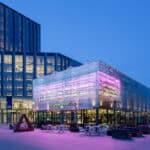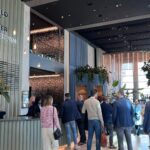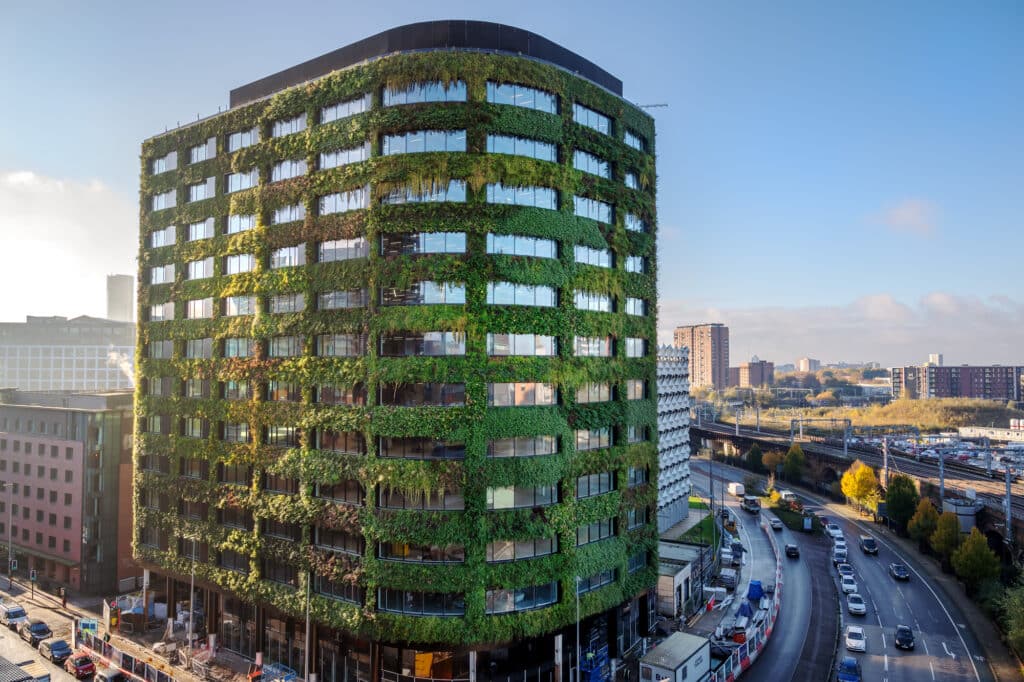
Sustainable buildings continue to set high standards across the United Kingdom
Buildings represent both a significant challenge and a great opportunity in lowering carbon emissions and advancing towards a carbon-neutral economy globally. Today, the built environment consumes over a third of all produced energy worldwide and is responsible for over 40% of all carbon emissions, highlighting the importance of the building industry in our path towards net-zero carbon economies. In the United Kingdom, a number of exemplary buildings illustrate how this challenge can be tackled while presenting opportunities.
Enterprise Centre at the University of East Anglia (UEA)
Recognised as an exemplary sustainable building by COP26, the Enterprise Centre at the University of East Anglia is a true beacon of green buildings. The Centre was completed in 2015 and has received BREEAM Outstanding with a score of 90.8%. Adhering to Passivhaus standards, the building is characterised by airtight construction and exceptional insulation ensure it effectively retains heat during the winter and cool air during the summer, reducing reliance on traditional heating and cooling systems. Moreover, the roof is covered by 480m2 of solar panels that save 3.9 kg CO2e/m2 annually. Consequently, the building emits has 75% lower carbon emissions than similar buildings. This not only translates into lower carbon footprint but also significant energy savings.
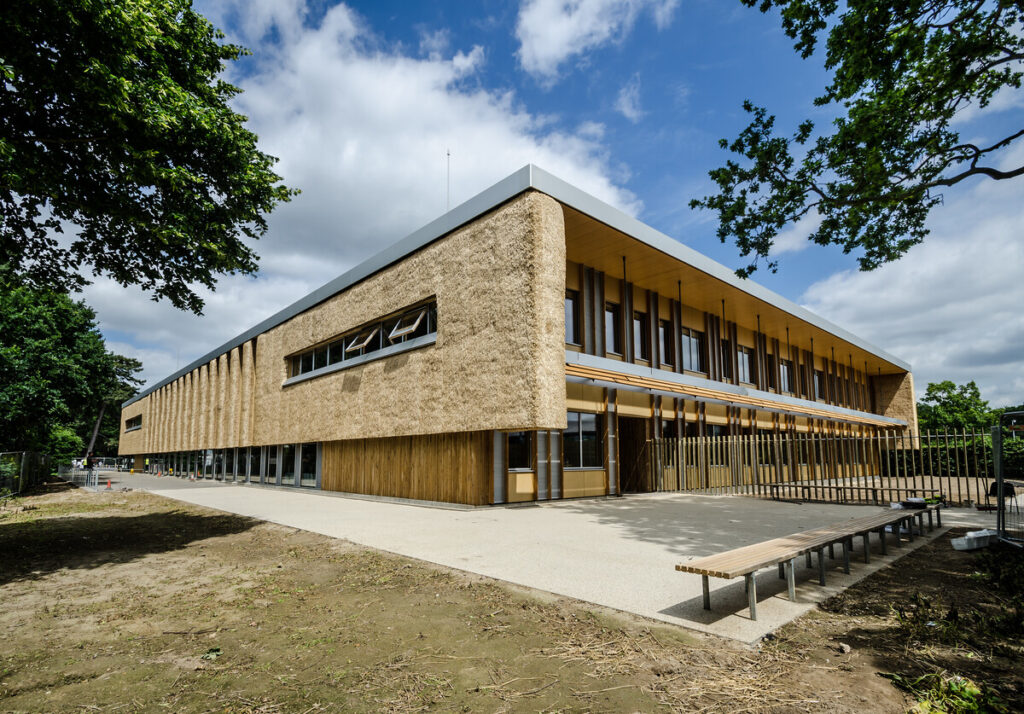
Additionally, the buildings have put on sourcing locally sourced and recycled materials. These include recycled paper for insulation, reprocessed glass, clay plaster, nettle board as well as hemp fabric and timber from the Norfolk area.
City Hall, in the London Borough of Newham
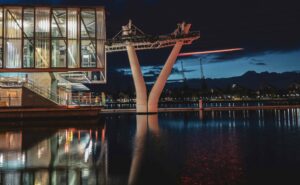
Built in 2012 and serving as the sustainable headquarters of the Mayor of London after it was retrofitted in 2022, City Hall in Newham is a great example of green public buildings. Now, the building consumes around 50% less energy than similar-sized buildings and runs 100% on renewable energy sourced through its solar PV and solar thermal panels. To increase energy efficiency, the building was also equipped with high-efficiency LED lighting and triple-glazing during its renovation. When originally built in 2012, the building was the first in the world to achieve both BREEAM Outstanding and LEED Platinum classification.
‘Eden’ – Britain’s most sustainable office building
A landmark project in Manchester, the Eden, was completed in January 2024. Exceeding the UK Green Building Council’s 2030-2035 operational energy targets, it is Britain’s most sustainable office buildings with a projected annual energy consumption of 41kWh/m2. The construction followed Passivhaus principles, has a 60:40 solid-to-glazing ratio and is equipped with air-source heat pumps. Consequently, the Eden achieved a record 5.5 NABERS ‘Design Reviewed’ Target Rating.
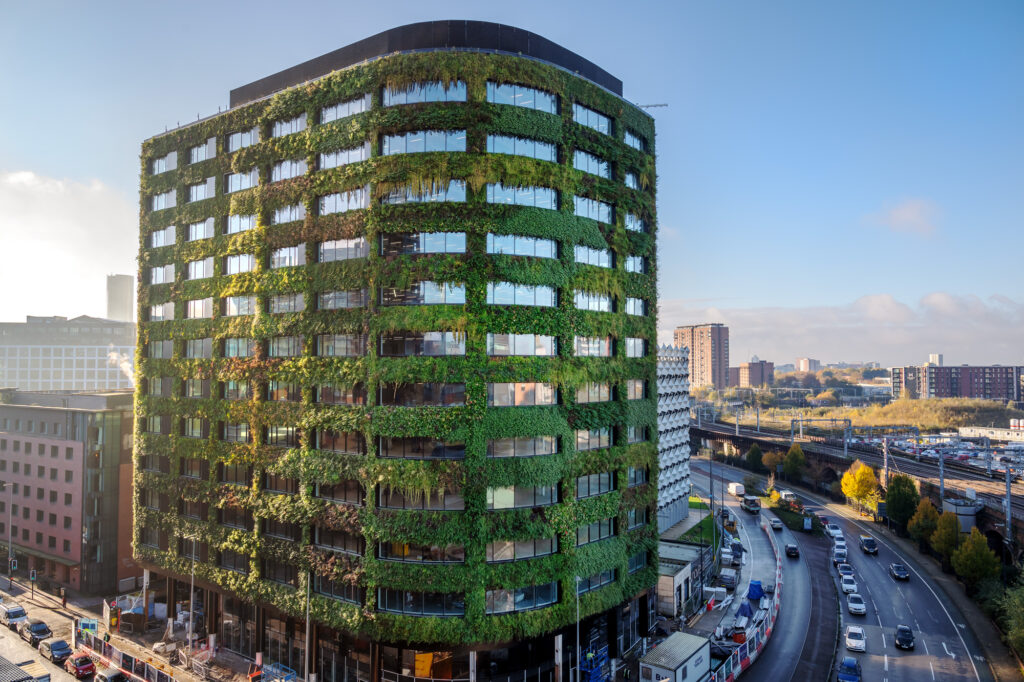
What makes the Eden truly unique is it’s green, living façade covered with plants. Designed to remove air pollutants (such as carbon), control temperature and increase biodiversity in the area by 174%, the building hosts Europe’s largest living wall on 36,000 sq ft/3345 sq mt. Bringing major benefits to the occupiers of the building such as health, wellbeing and productivity, the Eden is a great example of WELL Building Standards in practice. Subsequently, the building is on the target to acquire BREEAM Outstanding rating.
Bloomberg’s European Headquarters
Aiming to set standards for office environments, Bloomberg’s European Headquarters in London was building against BREEAM standards – achieving a score of 98.5%. The building has set standard for sustainable office buildings, demonstrating that it is possible to create a modern and efficient workplace while minimising environmental impact. Equipped with highly efficient LED lights, the building’s lighting system consumes 40% less energy than conventional fluorescent lighting. Furthermore, the building has a unique natural ventilation system on its façade with adjustable petals that help control cooling and heating.

